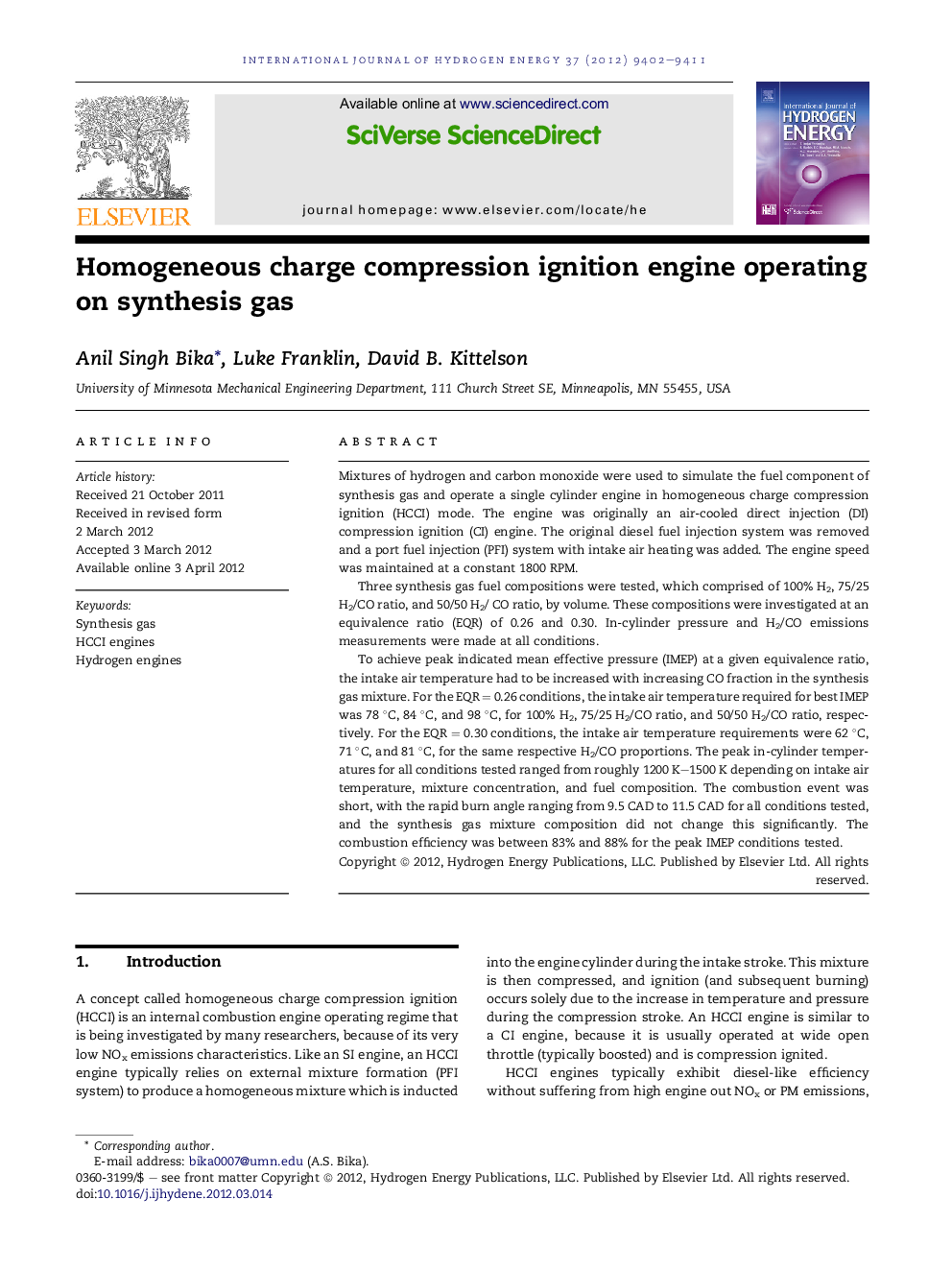| Article ID | Journal | Published Year | Pages | File Type |
|---|---|---|---|---|
| 1271434 | International Journal of Hydrogen Energy | 2012 | 10 Pages |
Mixtures of hydrogen and carbon monoxide were used to simulate the fuel component of synthesis gas and operate a single cylinder engine in homogeneous charge compression ignition (HCCI) mode. The engine was originally an air-cooled direct injection (DI) compression ignition (CI) engine. The original diesel fuel injection system was removed and a port fuel injection (PFI) system with intake air heating was added. The engine speed was maintained at a constant 1800 RPM.Three synthesis gas fuel compositions were tested, which comprised of 100% H2, 75/25 H2/CO ratio, and 50/50 H2/ CO ratio, by volume. These compositions were investigated at an equivalence ratio (EQR) of 0.26 and 0.30. In-cylinder pressure and H2/CO emissions measurements were made at all conditions.To achieve peak indicated mean effective pressure (IMEP) at a given equivalence ratio, the intake air temperature had to be increased with increasing CO fraction in the synthesis gas mixture. For the EQR = 0.26 conditions, the intake air temperature required for best IMEP was 78 °C, 84 °C, and 98 °C, for 100% H2, 75/25 H2/CO ratio, and 50/50 H2/CO ratio, respectively. For the EQR = 0.30 conditions, the intake air temperature requirements were 62 °C, 71 °C, and 81 °C, for the same respective H2/CO proportions. The peak in-cylinder temperatures for all conditions tested ranged from roughly 1200 K–1500 K depending on intake air temperature, mixture concentration, and fuel composition. The combustion event was short, with the rapid burn angle ranging from 9.5 CAD to 11.5 CAD for all conditions tested, and the synthesis gas mixture composition did not change this significantly. The combustion efficiency was between 83% and 88% for the peak IMEP conditions tested.
► An engine was modified to run in HCCI mode on varying H2/CO blends. ► Increasing CO/H2 ratio required increased air temperature for peak IMEP. ► CO/H2 ratio did not have a significant effect on the rapid burn angle. ► Combustion efficiency ranged from 83% to 88% and increased with increasing H2 fraction. ► A large fraction of energy left the system as heat transfer to the cylinder walls.
